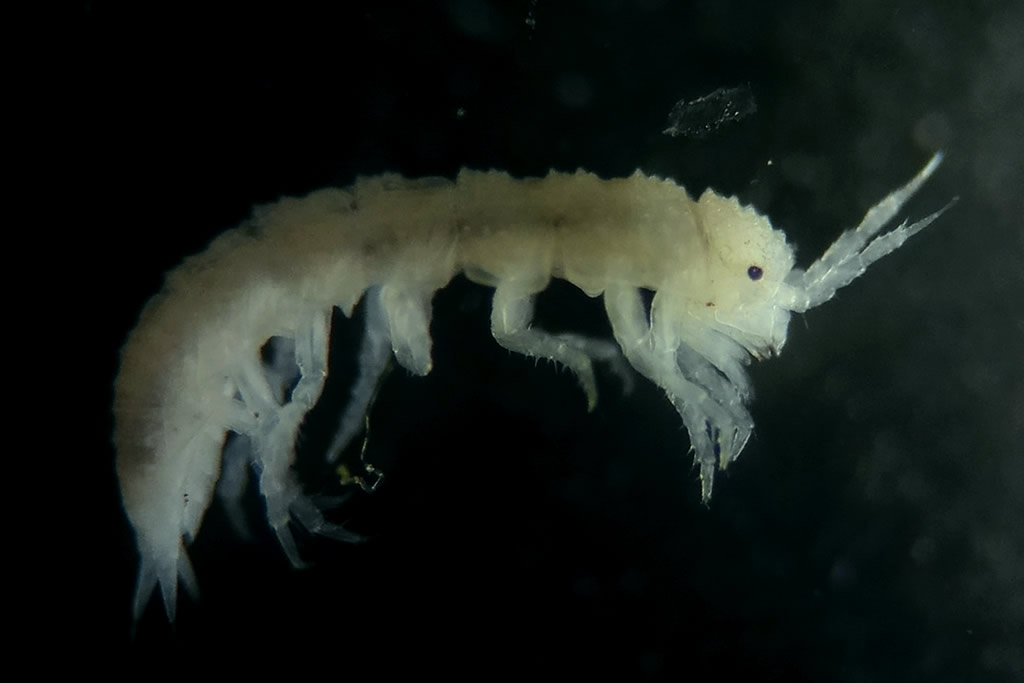Miktoniscus linearis (Patience, 1908)
Status:
GB IUCN status: Not applicable (non-native)
ID Difficulty
Identification
The pygmy woodlice of family Trichoniscidae (and Styloniscidae) are readily distinguished from other woodlice by the shape of the antennal fagellum which comprises a tapered cone (of indistinct segments) bearing a terminal bristle. All trichoniscids, except Haplophthalmus spp., have a stepped body outline.
Miktoniscus linearis is a very small, white woodlouse reaching only up to 3 mm in length. The body is strongly tuberculate and the eye composed of single black ommatidium (thus similar in appearance to the coastal M. patiencei).
Distribution and Habitat
Miktoniscus linearis was described new to science from heated glasshouses at Kew Gardens in 1908 (and subsequently discovered in 1930 at Berlin Botanic Gardens, Germany). In 2019 specimens were collected inside the tropical house at Treborth Botanic Gardens and in 2020 a single female specimen was found under a piece of dead wood at the Eden Project (Rainforest Biome), Cornwall (Gregory, 2025).
So far this woodlouse has not been found 'in the wild' so it is not known from where it originates.
References
Gregory, S.J. (2025) 15 years on: An update to Woodlice and Waterlice in Britain and Ireland, part 2 ~ Non-native species, not yet naturalised. Bulletin of the British Myriapod and Isopod Group, 37: 7-25.
Gregory, S. (2009) Woodlice and Waterlice (Isopoda: Oniscidea & Asellota) in Britain and Ireland. Field Studies Council/Centre for Ecology & Hydrology.
Links
World List of Marine, Freshwater and Terrestrial Isopod Crustaceans: https://www.marinespecies.org/isopoda/aphia.php?p=taxdetails&id=884285



